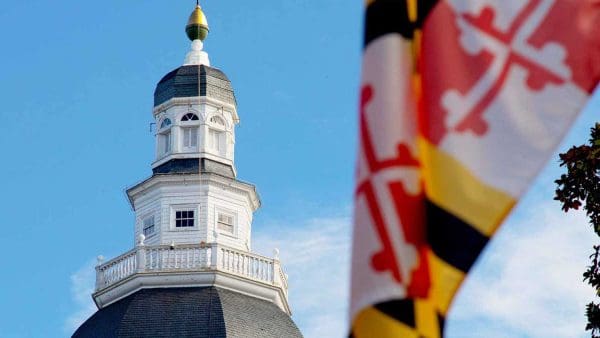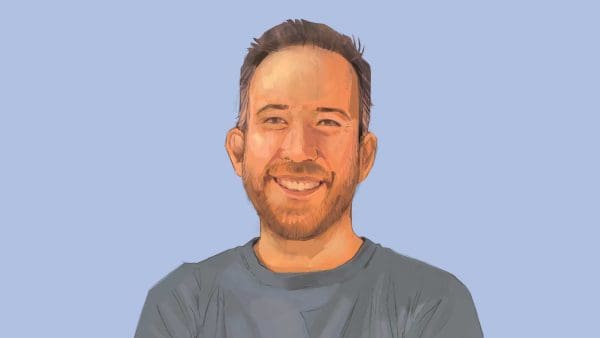Damien Newton ’99 was 6 years old when he was introduced to his first bike, a hand-me-down from his older brother, repainted his favorite color orange. With blocks on the pedals so his feet could reach, Newton learned to ride on the rural trails and fields outside Reading, Pennsylvania, where he was raised. Today, Newton bikes through Greater Los Angeles, where as editor and founder of Streetsblog Los Angeles (la.streetsblog .org), an online, nonprofit news site, safe cycling is just one of many transportation issues he covers on a daily basis.
“Transportation is an issue that everyone understands in one way or another,” says Newton, who majored in political science at Johns Hopkins before earning a master’s degree in communications from American University. “The general Streetsblog idea is that if we provide people with safe, reliable options that aren’t necessarily car-based, people will choose them sometimes—not necessarily every time—but sometimes.”
Streetsblog began in New York in 2006 as a way to address livable street issues and transportation policies. After working for Goucher College and on campaigns for Sen. Barbara Mikulski (D-Md.) and Los Angeles City Councilman Lawrence Bell, where he reported to Bill Henry ’92 and Peter Dolkart ’95, Newton moved to New Jersey to work for the Tri-State Transportation campaign, a nonprofit dedicated to reducing reliance on cars and trucks. He ran in the same social circles as the Streetsblog New York founders and was an avid reader of the news site.
When Newton and his wife, Marybeth Miceli ’99 (ENG), planned a move to Los Angeles in 2008 for her job, Newton approached Streetsblog New York with the idea of doing something similar on the West Coast. Instead, the company asked him to launch a Los Angeles version of the news site. Six years later, Streetsblog Los Angeles is its own separate nonprofit with close ties to the New York and Washington Streetsblogs.
Newton likens the relationship to National Public Radio and its affiliates: “We’re the local channel of the national, but we have our own editorial board, our own calendar, our own fundraising.”
Eighty percent of the blog is underwritten with grants from foundations like the California Endowment, a public health foundation. The other 20 percent comes from advertising and reader donations. Newton has also launched Streetsblog sites for Santa Monica and Long Beach.
Streetsblog Los Angeles features a range of articles, from updates on current transportation issues in the California Legislature, to “The Week in Livable Street Events,” to links to national and world stories with a transportation focus, to personal essays about walking children to school, or when to begin biking with an infant on board.
“We practice a type of journalism we refer to as impact journalism, and we measure the quality of our stories and the value of our work based on whether the stories are resonating in the community or making impact on policy, not by number of page views and click-thrus and those sorts of things,” Newton says. The best stories, he says, both report and help to frame the discussion of issues crucial to readers dedicated to livable streets.
Case in point is a piece Newton counts as one of Streetsblog Los Angeles’ real successes: a story on child bucket seats that attach to the front of a bicycle, something that at the time was illegal in Los Angeles. “We wrote a story about how in the changing world of bicycles, you were actually outlawing something that was really safe,” Newton explains. Newton mailed the article, which included examples of different kinds of bikes and makes of child seats and testimonies from people who used them, to two Los Angeles City Council members he characterizes as “bike-friendly.” Soon, Newton was in City Council headquarters demo-ing the bike and seat he used to drive his two children to pre-school. The legislation passed, opening up the opportunity, says Newton, “for hundreds of kids to have an experience where they’re getting biked around by their parents instead of driven around.”
Although Newton calculates that in a given day, roughly 90 percent of his commuting is done by bike or walking, this wasn’t always the case. At Hopkins, he admits, he had to drive in order to get to his internship in Howard County. “When I see the signs connecting Baltimore campuses via bike lanes, I think that’s awesome,” he says. “I wish I had thought of that.”




